Soap, love letters and global warming
Soap, love letters and global warming
Blue
Oyster Project Art Space
Listing information
3 – 27 November, Juan James Sydney Simon Papillon et Merci et au Revoir, Liz Rowe Never Too Careful, and Max Bellamy 99 Ways to Solve Global Warming, at Blue Oyster Art Project Space, 24b Moray Place, Dunedin.
Media Release – 25 October 2010
Soap, love letters and global warming
Thorny political, environmental and economic issues are tempered with some lighter notes at Dunedin’s Blue Oyster Art Project Space in November.
Three exhibitions – Juan James Sydney Simon’s Papillon et Merci et au Revoir, Liz Rowe’s Never Too Careful, and Max Bellamy’s 99 Ways to Solve Global Warming – tackle a range of contemporary issues such as global warming, the problem of refugees and asylum seekers, and the economic and social consequences of consumerism and market-driven economies. However, underlying the exhibitions are some lighter themes including love and romance, and our obsession with hygiene.
Bills and love letters
In Papillon et Merci et au Revoir Simon will fill a room with the hand torn remnants of every bill, love letter and piece of drug-fuelled writing he has ever written and received, then emerge out of it covering the surrounding gallery floor with paper waste.
“I was never able to read any of it, which was in part due to an eight-year drug addiction. I would just put everything in a box. Over the past year I have read, and paid, and then torn everything up into pieces and that process has been an integral part to this piece The paper is a by-product of each experience and the overall concept a synthesis of all these experiences,” he says.
The work will also include a taxidermied black bird, a glass skull and a work in a nearby café. The various elements of the work, including a written component in both English and French, are of deeply personal experience and cover themes ranging from the excesses of consumption in contemporary society to the need for love and romance.
“Underneath everything else, love and romance is most dear," says Simon.
Wall of soap
Rowe’s Never Too Careful uses nearly 2,500 blocks of household laundry soap to make a wall that blocks part of the gallery space.
“Walls can provide us with security, like the walls of a house, but they are also built to control people. People have always moved from place to place, but these days many countries want to restrict people’s movement across their borders creating huge moral and political dilemmas around how refugees and asylum seekers are dealt with.”
Questions of place, and where we belong in the world, underpin the work. Sounds of people moving about on the other side of the wall leave the viewer wondering whether they are on the inside or the outside, the right side or the wrong side of the wall.
“The soap refers to an obsession with hygiene, at the domestic or local level, along with the fear of being overwhelmed by 'the great unwashed masses' at a national level,” she says.
Bold solutions to global warming
In the third exhibition, 99 Ways to Solve Global Warming, Max Bellamy presents bold images of solutions to global warming that serve as a metaphor for how challenging societal issues are approached. His glossy, hyper-real large format photographs capture unusual situations that blur the line between documentary and fiction.
Using a 50-year-old camera over a period of four months, he searched out and invented visually appealing situations that surmise the complex and faceted cultural response to global warming.
“Part of the work is a critique of the way many of the proposed solutions to global warming are market based because there’s an inherent inconsistency in this - market solutions to market problems are never going to work.”
Bellamy says using non-digital technology, where every frame counted, proved an interesting counter to consumer driven society. “It’s a liability in many ways, but it slowed me down as a photographer and one of the solutions to global warming is slowing down.”
All three artists are currently Dunedin-based. Rowe and Bellamy are both Fine Arts graduates from Otago Polytechnic.
ends
Blue Oyster Art Project Space | www.blueoyster.org.nz | Ph 03 479 0197
Basement, 24b Moray Place | PO Box 5903, Dunedin
9058
Gallery hours: Tuesday–Friday 11am–5pm, Saturday
12pm–3pm
The Blue Oyster is supported by Creative New
Zealand | Toi Aotearoa and Dunedin City Council |
Kaunihera-a-rohe o
Otepoti


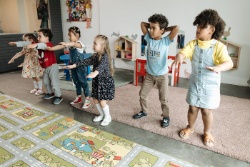 ECE Parents' Council: Complaints About ECE Services Show Parents Feel Dismissed When Raising Concerns
ECE Parents' Council: Complaints About ECE Services Show Parents Feel Dismissed When Raising Concerns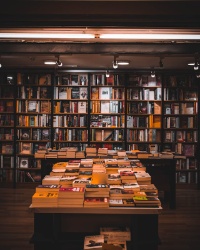 Publishers Association of NZ: Aotearoa New Zealand Book Industry Awards 2025 Winners’ Announcement
Publishers Association of NZ: Aotearoa New Zealand Book Industry Awards 2025 Winners’ Announcement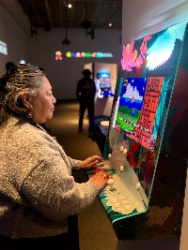 Tūhura Otago Museum: South Island Levels Up With Toi Māori-Inspired Arcade Art At Tūhura
Tūhura Otago Museum: South Island Levels Up With Toi Māori-Inspired Arcade Art At Tūhura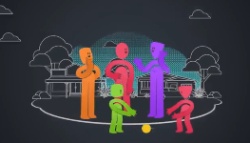 NZSTA: Campaign Launched To Boost School Board Participation
NZSTA: Campaign Launched To Boost School Board Participation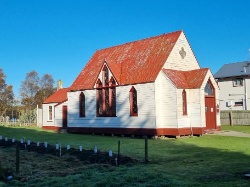 Heritage New Zealand: Kakanui Church Listed As Category 1 Historic Place
Heritage New Zealand: Kakanui Church Listed As Category 1 Historic Place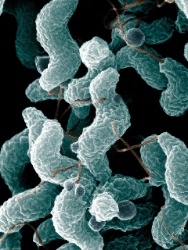 NZ College of Public Health Medicine: College Supports Calls For Stronger Regulation To Address Campylobacter Epidemic
NZ College of Public Health Medicine: College Supports Calls For Stronger Regulation To Address Campylobacter Epidemic